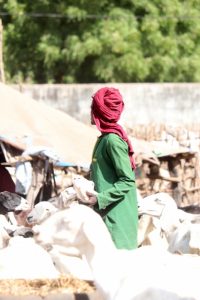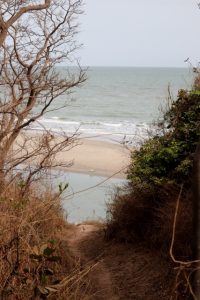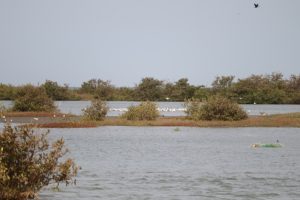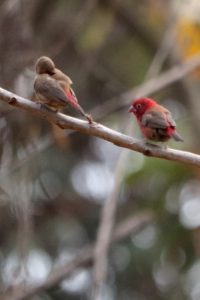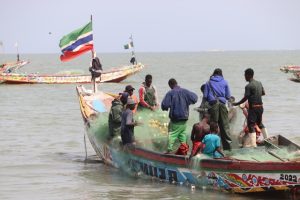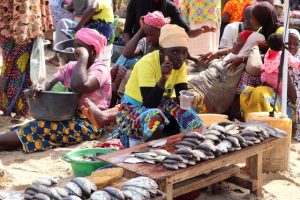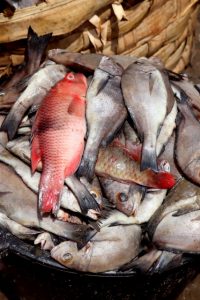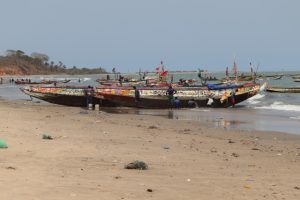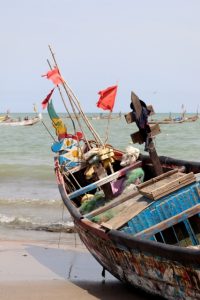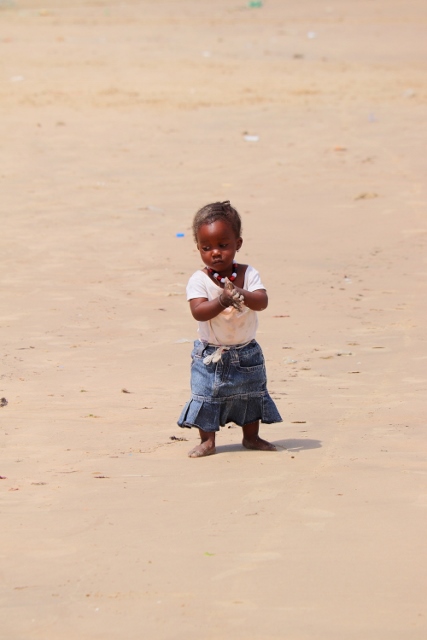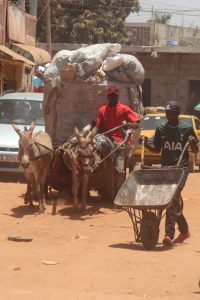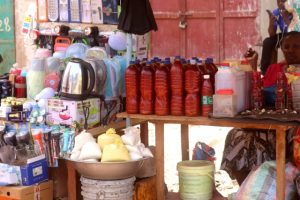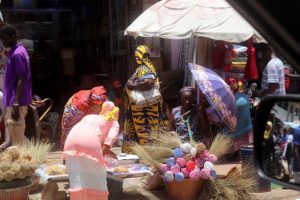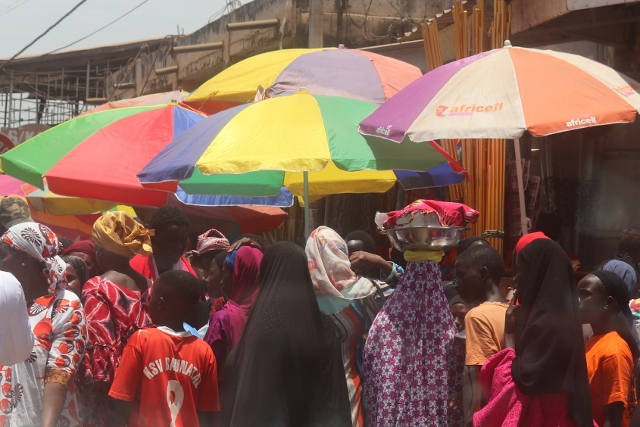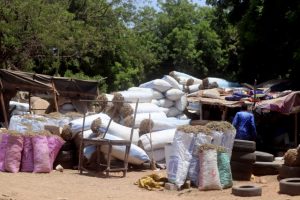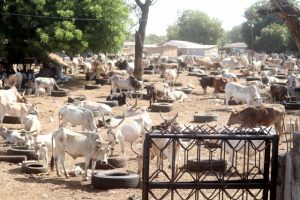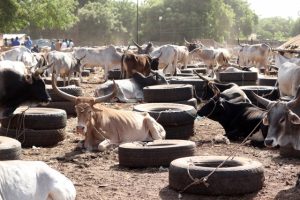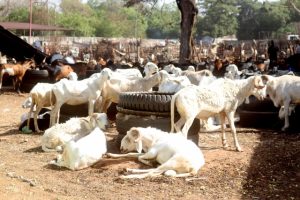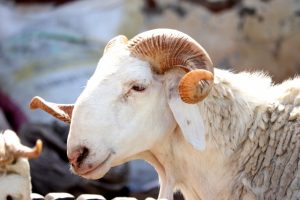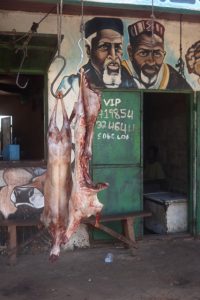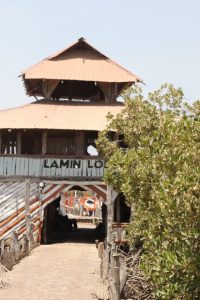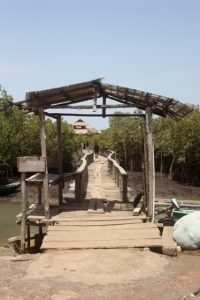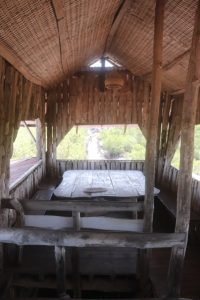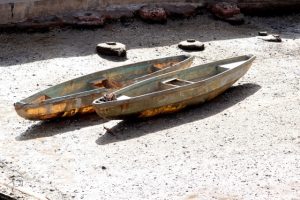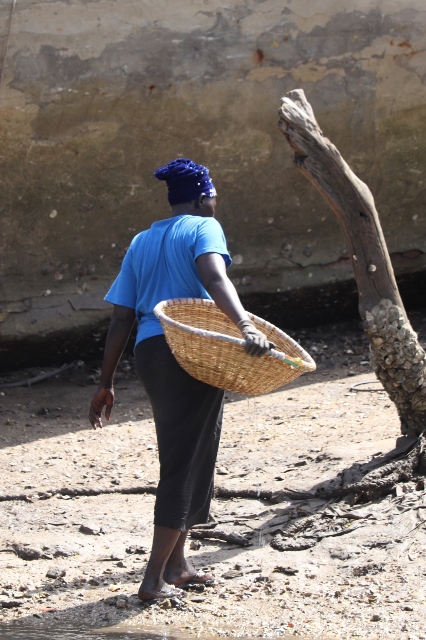Having lingered in our comfortable lodge for a few days, it is time to undertake some activity again. We head for Tanji, a little further down the coast, to explore the bird reserve. Hmm. Long story short, we see more birds in our lodge than that we saw on our one hour walk through the reserve, which is mostly populated with shy baboons. We make it to the lagoon, which is somewhat better, bird-wise, but is also littered with the trash left by the fishermen – and the sad turtle who died tied up in net remains and rope.
The fishermen we meet afterwards, in the village of Tanji. Lots of activity here, offshore, where the boats are floating. Fresh catch is being brought ashore, whilst on other boats, some on the ater and some on the beach, maintenance is being carried out. Also on the beach, the fish market, where lots of fresh fish is being sold, from small stalls or low tables or wheelbarrows, and all of this under a colourful mesh of umbrellas against the sun. In the warehouses further back fish is being smoked, whilst a whole array of second-hand freezers – not working on electricity anymore, but with ice – is used for fish storage, presumably for later despatch elsewhere.
If we though we had seen the whole fishing fleet, we were mistaken. Close to Tanji is a place called Ghana Town – indeed, a settlement of Ghanese people, who have also specialised in fishing. Their enormous fleet is floating offshore, and more boats have been pulled up onto the beach, equally colourful as in Tanji. The capacity of this fleet must be enormous, and I hate to think about the long term prospect of this particular – and obviously important – economic sector. Yet, from what we’ve seen on the market in Tanji, short term yield doesn’t seem to be a problem.
From Ghana Town we head for Lamin, an idyllic place on the Gambia river, some 20 km away. Which takes us 2 hours, by car. We have to get through Serrakunda, and more specifically, through the Serrakunda market. Serrakunda is the biggest town in the country, much bigger than nearby capital, Banjul. And it is almost the end of Ramadan, which prompts many people to go shopping. All at the same time, it looks. But I suppose inching through by car is an infinitely better way to see the market than walking, through a dense crowd, and in the oppressive heat of the late morning.
Another end-of-Ramadan effect manifests itself at the Abuko livestock market. With the upcoming celebrations the market is fuller than ever before, with cows, sheep, goats, all waiting to be sold to be slaughtered – or slaughtered right away, the market is also the place of the abattoir and an array of butcher shops. It is truly impressive, this enormous amount of animals together, especially when you realise that in a few days they will all be gone!
We make it to the Lamin Lodge, the restaurant we had targeted, for a rather late lunch. The all-wooden lodge, with several floors, is a fabulous construction, only slightly marred by the many baboons that freely roam around. And are a lot less shy than the ones we encountered earlier in the nature reserve. According to the waiter, they behave aggressively to scare you away from your plate, so that they can have it for themselves – although they would never attack anybody. Hmmm, I am not convinced. But we manage to finish our food undisturbed, before we head back to our own comfortable lodge. Exhausted. Why on earth did we have to leave our cocoon, in the first place?
